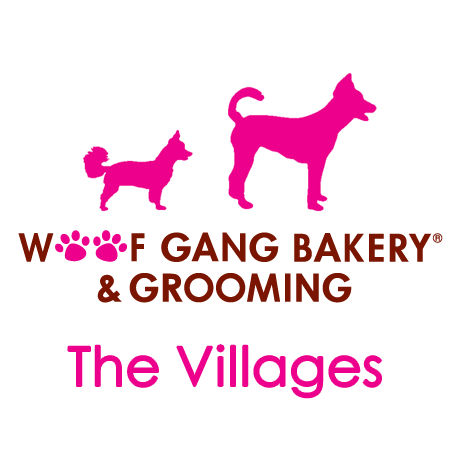Anesthesia versus Non-Anesthesia
Welcome to Woof Gang The Villages first BLOG article.
While we offer Non
Anesthesia Dental Scaling (NADS), in the store, under direct supervision of
a Veterinarian, it is imperative that our pet parents have all the information
I can provide before making important health choices for their pets. The facts
of this debate will be discussed in detail so you can decide what is best for
your pet
I will begin by pointing out the obvious, I am not a
veterinarian, nor should any information we provide to our pet parents replace
the advice you receive from your veterinarian. While I believe knowledge is
power, conversations such as this is meant to send you on your own educational
journey, reading, gathering information and discussing with your veterinarian
before making any decisions.
In 2004 The American Veterinary Dental College published a
position statement entitled, “Companion Animal Dental Scaling Without
Anesthesia” (NADS).
https://www.avdc.org/Dental_Scaling_Without_Anesthesia.pdf
The Dental College position was clear in their belief that
NADS was “inappropriate “ for a number of reasons:
·
Beginning with the inability to perform the most
important and basic portion of the cleaning, the oral exam, complete with
x-rays. It is their position that a complete, comprehensive oral exam is
impossible if the animal is awake and not anesthetized under general
anesthesia.
·
Access to the area under the gum line is not
possible in a conscious animal.
·
Concern, that the slightest head movement by an
awake animal can result in oral injury and a possible bite to the health
professional performing the cleaning.
·
Finally, stress on the pet is considered a valid
health consequence for the animal restrained while awake during a procedure that
may be painful and he has no understanding of.
·
Another important consideration when choosing
between NADS and conventional dental cleaning is the value of intubation in
protecting the animal’s airway from potential inhalation of debris, water and
secretions during the procedure. This is a powerful, valid argument when
considering what is best for your animal. The veterinary community also provides
reassurance to pet parents afraid of anesthesia complications, stating almost
any pet can be anesthetized safely today.
As the battle raged on in the veterinary community, in 2013
The American Animal Hospital Association published their guidelines “AAHA
Dental Care Guideline for Dogs and Cats”.
https://www.aaha.org/public_documents/professional/guidelines/dental_guidelines.pdf
The AAHA felt so strongly that all dental cleaning be
performed under anesthesia that veterinary practices compliance was mandatory
in order to obtain accreditation by the AAHA.
AAHA supports the administration of anesthesia for the exact
reasons mirrored by those of the AVDC with a few additional caveats. AAHA considers NADS to be purely a cosmetic
procedure. That while the teeth appear clean and visibly whiter, there is no
ability to clean beneath the gum line where bacteria lives and causes
periodontal disease. Additionally, without x-rays there is no way to evaluate
the majority of dental pathology that cannot be appreciated on visual exam.
Ok, so now we get it….
Dental cleaning with anesthesia is the only way to go.
NOT
SO FAST!!!
Where is the science? Are there any comparative studies to
validate, that NADS is an inadequate means of dental cleaning when compared to
cleaning the teeth while under anesthesia??
The only study to my knowledge was performed in 2013 and
published in The Journal of Integrative Veterinary Care.
https://www.avma.org/News/JAVMANews/Pages/160201a.aspx
The study was initiated by Dr. Joshua Bazavilvazo the
founder of Pet Dental, a NADS service. Dr. Bazavilvazo, Dr. Mayra Urbeta, Dr. Stephanie
Sur and several others compared 12 dogs and 12 cats where NADS was performed.
The animals were then anesthetized and examined.
Eureka!!….No evidence of residual plaque or tarter was detected IN
ANY OF THE ANIMALS. Success of
the NADS is dependent on the skill level of the practitioner performing the
procedures and to date, there are no standards for instruction, testing or
certification.
Two harsh critics of NADS, Dr. Kate Knutson who was an AAHA
delegate and Dr. John de Jong became believers after seeing numerous NADS
performed and both believe NADS has a valid place in routine oral care for our
companion animals, landing somewhere between screening and detection. Dr. de
Jong has gone so far as to say, conscious dental cleaning can be a valuable
adjunct to complete and thorough oral health care.
Ok, so where do we land???
Experts
on either side, even those who perform NADS and those that have seen it’s value,
believe all companion animals should have routine dental cleaning under
anesthesia where x-rays and deep cleaning and examination can be performed.
How often will depend on the propensity of your pet to develop plaque and
tarter, your wallet and a belief system that it is totally necessary to put my
dog out. NADS is certainly valuable for in -between cleanings, for owners that
absolutely will not anesthetize their pets for this procedure or for owners
where the procedure itself is cost prohibitive.
The AAHA statement is clear: it’s all
or nothing. That leaves a large number of pets suffering
from severe dental disease. Hopefully, as larger studies are performed, the entire
Veterinary Dental community will make pet owners decisions easier and will
accept the usefulness of NADS as an
adjunct to routine dental cleaning under anesthesia.

